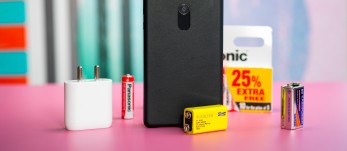Best midrange all-rounders 2025 - buyer’s guide
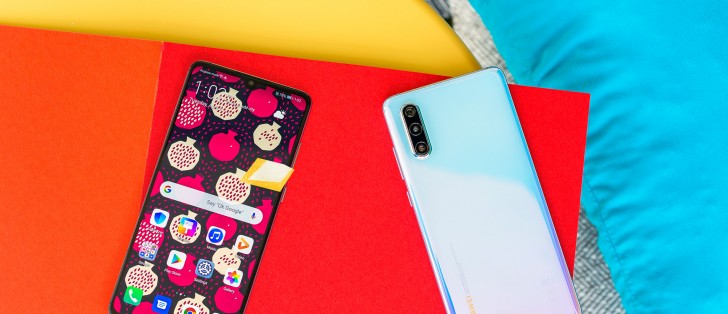
Last updated: February 23, 2025 (Changelog)
The search for the best midrange phone ends here. Check out our editors' shortlist in several price categories.
Since 'midrange' is quite a wide range, we've split it further into price brackets. You could say the €200/300/400 subcategories are spaced too close, but we do find that €100 is a meaningful price difference in this segment. Then there's what we call the 'premium all-rounders' category that sits below the all-out flagships - not exactly cheap, no, but still good value.
Best midrange phones around €200
Editors' choice
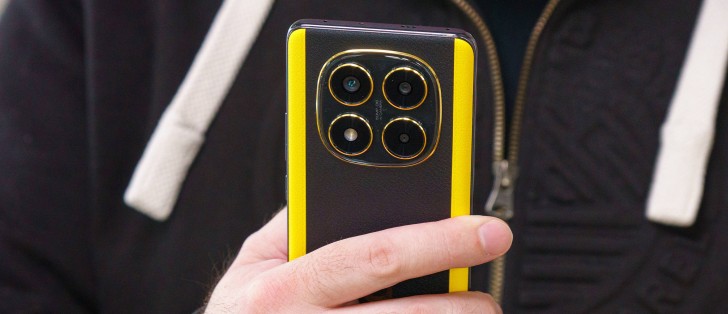
Xiaomi Poco X7
- IP68 waterproof, improved drop resistance
- Available as an eco leather model with a stand-out design
- Great AMOLED, high-res, 120Hz, Dolby Vision
- Good day-to-day performance
- High-density battery with improved performance at sub-zero temps
- Reliable cameras day and night
- Rich connectivity options
- Slower charging that the X6
- Video stabilization is not very good for walking
- Virtual proximity sensor
- Android 14 at launch
The Poco X7 is not a major step up from the Poco X6, but still a very good offer. It is also a reworked version of the recent Redmi Note 14 Pro 5G and since it is cheaper than its Redmi counterpart, it easily made it to the top spot in this category.
Compared to the X6, the X7 comes with a refreshed design, a newer chipset and a better camera, but the complete water resistance and the enhanced shock absorption are probably the most notable improvements.
Still, if you are not coming from a Poco X6 or Redmi Note 14 Pro, the Poco X7 will impress you with design, screen and even performance. We found its battery life and charging good enough, and its rich connectivity options are a big plus.
The Poco X7 main camera does not live up to our expectations as it didn't offer a lossless 2x zoom, which was available on the Poco X6 (with a solid 4x option even, too).
While the Poco X7 Pro comes with HyperOS 2 and Android 15, the X7 comes with HyperOS 1 and Android 14, which means one less major upgrade for this phone. This is a trick we wholeheartedly do not approve of.
At the end of the day, it all comes down to this - is the Poco X7 a good device? Yes, it is. The phone has a well-rounded specs sheet and delivers on most of its promises.
Read full review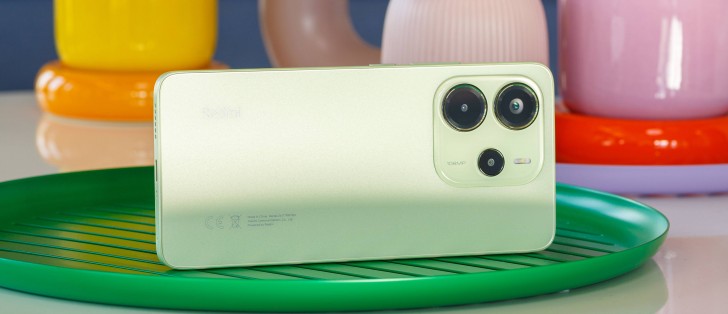
Xiaomi Redmi Note 14 4G
- Improved durability and IP54 rating
- Bright and nicely specced flat OLED display
- Decent battery life
- Dependable main camera
- 3.5mm jack, IR blaster, microSD card slot
- Aging chipset
- No 4K video, no ultrawide, disappointing selfie camera
- Doesn't come with the latest Android 15/HyperOS 2 out of the box
The new Redmi Note 14 4G appears to be a good all-rounder that improves upon its predecessor. Sure, the ultrawide camera is gone, but we don't count this as a huge loss. We've got longer battery life, a nice display, an aluminum frame with an updated Gorilla Glass 5 front panel and decent enough camera performance.
The Redmi Note 14 4G isn’t particularly fast, maybe even a bit slow. And its camera department fails to deliver on quality.
Overall, the Redmi Note 14 4G is a dependable offer in this basic segment and we do recommend exploring it.
Read full review
Samsung Galaxy A16 5G
- Attractive & sturdy design with slightly thinner bezels, IP54
- Super AMOLED display , 90Hz
- Latest OneUI and up to six major OS upgrades
- Solid main camera in photos and videos
- Great selfie quality
- Great battery life in gaming and calls
- 5G, NFC, microSD
- Not very bright display and no HDR video support, no AOD
- No stereo speakers
- Unsatisfactory real-world performance with stutters and slowdowns
- Pretty basic 5MP ultrawide and no 4K video recording with the stock app
- Virtual proximity sensor
The Galaxy A16 5G is a nicely constructed device covering most bases. We particularly like Samsung's fairly new commitment to up to six major Android upgrades on modest devices. Undoubtedly, there is a lot to love about One UI and all of the added features it offers. The Super AMOLED and the thin bezels are nice development here, as well as the IP54-rating.
The phone lacks stereo speakers, and its display, while not bad in any way, only has a 90Hz refresh rate and pretty modest maximum brightness. The Exynos 1330 chipset that we tested offers modest performance at best. The UI doesn't run particularly smoothly and is not snappy at all, which makes us worried about usability after a few Android updates have gone through, as promised.
The Galaxy A16 5G currently retails for about €180, which makes it a very good offer, all things considered.
Read our full review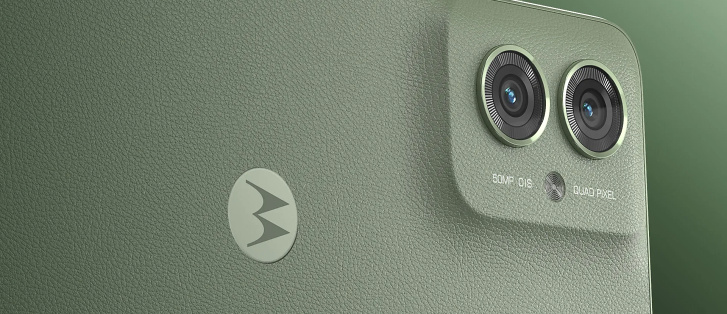
Motorola Moto G55
- Eye-catchy design with eco-leather, Gorilla Glass 5, IP52
- Full HD LCD, 120Hz
- Promising main camera
- Large battery, fast enough charging
- Loud stereo speakers
- No 4K video capturing
- No proper ingress protection
- Aging chipset
The €180 Moto G55 is quite an attractive offer priced below €200. It has a beautiful and lightweight design. The LCD screen is of high resolution, high refresh rate and there is only a small perforation.
Furthermore, the Note 12S offer a lot of connectivity options including 5G, FM radio, NFC, and more. Plus, its primary camera promises great photo and video quality. The large battery is much appreciated, of course.
SPECSBest midrange phones around €300
Editors' choice

Xiaomi Poco X7 Pro
- IP68-rated design, vegan leather option, Iron Man edition as well
- Bright AMOLED, high resolution and refresh rate, Dolby Vision
- Fast to charge
- Flagship performance, including sustained peformance
- Good main camera, excellent video stabilization
- HyperOS 2 is smooth, nice AI tricks
- Battery life is okay but low for a 6,000mAh battery
- Poor selfie camera, so-so ultrawide
- No eSIM support
The €330 Poco X7 Pro turned out to be an excellent bang for the buck offer as it offers unmatched flagship performance for its price class. It also has a cool and stylish design, a great AMOLED screen and an attractive design with a solid build. The battery life and the charging are quite alright, and so are the speakers.
We were also impressed by the smoothness of the HyperOS 2 and its AI options. And let's not forget the promised three major Android updates and 4 years of security patches.
Admittedly, the camera is mostly mediocre, except for the 2x zoom quality and the video stabilization. The rear cameras get the job done, but there is nothing impressive about the quality. The selfie shooter is one of the worst we've experienced lately, though.
If not for the so-so cameras, we would have given an excellent mark for this Poco X7 Pro. But even with these imperfections, the Poco X7 Pro is the most powerful smartphone around the €400 mark with a premium display, cooling, and top-notch battery and charging technologies. Given the all-round premium experience on a low-tier midrange price, the Poco X7 Pro easily becomes our top pick for this category.
Read full review
Motorola Edge 50 Fusion
- Exquisite design, colors and materials
- IP68 ingress protection
- Very good stereo speakers
- Excellent cooling and thermal behavior
- Solid all-around camera performance
- No HDR support
- Not particularly fast charging
The €280 Motorola Edge 50 Fusion is undoubtedly a gorgeous device through and through, one that deserves a special spot on this list, the top one. It is exquisitely made, and even though the bill of materials is not what would conventionally be considered particularly "premium," everything looks and feels very nice and falls into place. The IP68 ingress protection is also a great bonus to have. The display on the Edge 50 Fusion is also very solid through and through, perhaps with the exception of the lack of HDR support. We have nothing but praise for the hybrid stereo setup. The camera performance is pretty solid all around, too.
We have to say that the biggest weak point on the Edge 50 Fusion specs sheet is probably the Snapdragon 7s Gen 2 chipset. It doesn't offer ample performance in the CPU or GPU departments. Even so, it's not like the Edge 50 Fusion struggled to perform any particular task we threw at it, even gaming, so we won't go too hard on the choice of chipset, though it is worth noting that you can get much better performance in this price range.
Ultimately, we would say that if the Moto Edge 50 Fusion speaks to you, particularly with its looks, it won't disappoint in any particular way, and you should go for one. You will not regret it, on the contrary, we can see you recommending it to a friend or two.
Read our hands-on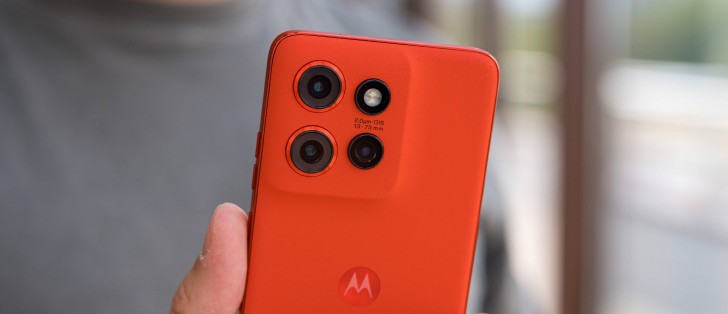
Motorola Edge 50 Neo
- Compact and easy to handle design, IP68-rated
- Nice and bright LTPO OLED display
- Dependable battery life, wireless charging, fast wired charging
- Versatile camera system with a 3x optical zoom and AF on the ultrawide
- Clean Android experience with 5 years of updates
- Camera image processing is overly contrasty
- Camera app is frustratingly laggy
Motorola has found a successful formula with some of its Edge devices for the last couple of years, and we believe that the Neos stand out even more as delivering great value. Strangely enough, only a few brands offer compact mid-range solutions, so the €330 Edge 50 Neo finds a very tight but comfortable niche for itself. And this year's Edge 50 Neo is even better. Motorola has significantly reduced its size compared to its predecessor and has added some premium features and hardware.
The Neo's display is now a 6.4-inch LTPO OLED, gains MIL-STD-810H military standard, runs on a more powerful chipset, supports wireless charging and adds a 3x telephoto camera. Not to mention, the default storage variant stands at 256GB now.
Despite its size, the Edge 50 Neo is indeed well-equipped. You don't see many compact midrangers with a telephoto camera and wireless charging. The handset also offers a higher-end LTPO OLED panel, decently fast charging capabilities and long battery life. The design is ergonomically-sound and the finish is soft and grippy. It is a phone worth considering.
Read full review
Xiaomi Redmi Note 14 5G
- Attractive design with improved durability and IP64 rating
- Nicely specced flat OLED display with HDR10+ video
- Fluid day-to-day performance
- Relatively quick charging
- Loudspeakers are very loud (at the expense of quality)
- 3.5mm jack, IR blaster, microSD card slot
- Camera quality is not great
- Some competitors support 4K video recording
- Virtual proximity sensor
- Doesn't come with the latest Android 15/HyperOS 2 out of the box
We enjoyed the 120Hz AMOLED display on the Redmi Note 14 5G and together with the loud stereo speaker it promises some proper video streaming experience. The battery life is alright and the charting speed is adequate.
The Redmi Note 14 5G isn’t particularly fast, maybe even a bit slow. And its camera department, while offering plenty of imagers, fails to deliver on quality.
If we still had to express some wishes, a better chipset would probably be up there. The same goes for the omission of HyperOS 2 and the latest Android 15, both of which Xiaomi has promised to deliver as soon as possible, whatever that means.
Overall, the Redmi Note 14 5G is a solid all-round offer in this basic segment and we do recommend exploring it.
Read full review
Xiaomi Redmi Note 14 Pro 4G
- Great build quality, now with an IP64 rating and GG Victus 2 glass
- Great AMOLED, high-res, 120Hz, 1B colors
- Pretty good stereo speaker setup
- Excellent low-light photos and videos
- IR blaster, microSD, 3.5mm audio jack
- No HDR video support on the display
- Slower charging than the previous model
- Pretty modest performance, even for the price
- Doesn't come with the latest Android 15/HyperOS 2 out of the box
- No 4K video capturing
The Redmi Note 14 Pro 4G brings a few upgrades over last year's model, notably the IP64 ingress protection rating, overall better build quality, and the larger 5,500 mAh battery. Besides that, not much has changed about the device's hardware. The new Helio G100 chipset is basically identical to last year's Helio G99 Ultra, especially in performance. The camera setup this year isn't much different, either.
The phone has good build quality and protection, both in the form of IP64 ingress protection and Gorilla Glass Victus 2 on the front. Despite lacking HDR support, the display is quite nice and offers plenty of brightness. We liked that the battery capacity has grown, even if charging has been notably downgraded. The stereo speaker system is solid and does not disappoint. The same is mostly true of the camera setup. We like how the 200MP main snapper performs after dark. However, the ultrawide is a bit disappointing.
The Redmi Note 14 Pro 4G is one good offer and it will do well as your daily driver, there is just one issue to consider – the cheaper Poco X7 model, which makes much more sense.
Read full review
Samsung Galaxy A35
- Sturdy build with glass on both sides and IP67 ingress protection
- Good quality 120Hz Super AMOLED display
- Stereo speakers with good quality
- Solid battery life
- Latest Android and One UI
- Good performance for this price range and great thermal behavior
- Solid photo and video quality
- 5G, NFC, microSD
- No charger in the box
- No HDR video support
- The virtual proximity sensor for turning off the screen during calls is not as good as a physical one
The Galaxy A35 is a very well-rounded device through and through. While it doesn't do anything groundbreaking with the tried-and-true Galaxy A formula, it further refines the A3X series. While the Galaxy A25 still arguably comes with quite a few omissions, notably to its build and ingress protection, the A35 is much closer to the A55 in its general offering.
With the A35, you get glass on both sides, Gorilla Glass Victus+ on the front, and an IP67 ingress protection rating. The 6.6-inch Super AMOLED 120Hz display is still solid without really changing much from previous generations. You also get a solid hybrid stereo speaker setup and a large 5,000 mAh battery with solid endurance.
Performance-wise, the Exynos 1380 is a nice little step up from the Dimensity 1080 inside the Galaxy A34. It is perfectly adequate for the class and enough to offer a fluent One UI experience. That experience will be a big draw for a lot of people. Very few features are still relegated to Samsung's flagship models and outright missing from the Galaxy A35. Plus, the A35 comes with four years of major software updates and five years of security updates.
That said, there is no point in claiming that the Galaxy A35 is the best in its class. Shopping around, you can get notably better hardware for your money. However, the Galaxy A35 remains attractive in its entirety as a package. We are sure it won't disappoint any prospective buyers.
Read full review
Xiaomi Redmi Note 14 Pro 5G
- Great build quality, now with an IP68 rating
- Great AMOLED, high-res, 120Hz, Dolby Vision
- Pretty good stereo speaker setup
- Adequate performance for the price point
- High-density battery with improved performance at sub-zero temps
- Excellent photo and video quality at night
- Rich connectivity options
- The 3.5mm audio jack is now gone, no microSD
- Slower charging than the previous model
- Doesn't come with the latest Android 15/HyperOS 2 out of the box
It's really hard to find any glaring faults with the Redmi Note 14 Pro 5G, as should frankly be the case with a phone that has all the makings to become insanely popular sales-wise. Xiaomi just knows how to deliver value at this competitive mid-range price point.
The Redmi Note 14 Pro 5G might not sport the most premium of materials, but it is extremely well made and also, new for this year, extremely well protected against the elements. An SD card slot would have been great, and we are sure some will mourn the demise of the trusty old 3.5mm audio jack, but other than that, we can't say anything is missing or out of place in this design. The controls are where they should be. The stereo speakers are symmetrical, well-balanced and quite nice-sounding. The display bezels are very reasonably seized, with practically every sensor hidden away somewhere and not in the way. This makes for an overall very clean and, dare we say, even classic design language.
The MediaTek Dimensity 7300 Ultra is far from a chart-topper in the grand scheme of things, but it is still a modern and efficient chip with all the connectivity features you may expect at this price point. There's ample battery to get most users through a full day, which is pretty adequate in our book. The same goes for the charging rate.
The Redmi Note 14 Pro 5G has a perfectly adequate and versatile camera setup. There are no glaring faults in either the photos or videos it captures. These are not quite flagship-grade by any means, but again, we can't realistically ask for much more for the class.
The fact that the Redmi Note 14 Pro 5G ships with Android 14 and HyperOS 1 while some of its siblings, like the Poco X7 Pro, come with Android 15 and XyperOS 2 out of the box is far from ideal. Let's call this a pretty obvious and not-so-clever trick to offer users fewer major OS updates in total, which we don't approve of.
We definitely wish that Xiaomi had made things a bit easier when it comes to differentiating between all the different models and regional versions of the Redmi Note 14 line. Things still get more confusing when we branch out into the Poco X7 family. If you like the Redmi Note 14 Pro 5G, then you might benefit from looking at the Poco X7 for essentially the same experience and potentially a better price tag.
All things considered, the Redmi Note 14 Pro 5G is an excellent overall package, and you can hardly go wrong when choosing the Redmi Note 14 Pro 5G or its Poco X7 counterpart.
Read full reviewBest midrange phones around €400
Editors' choice
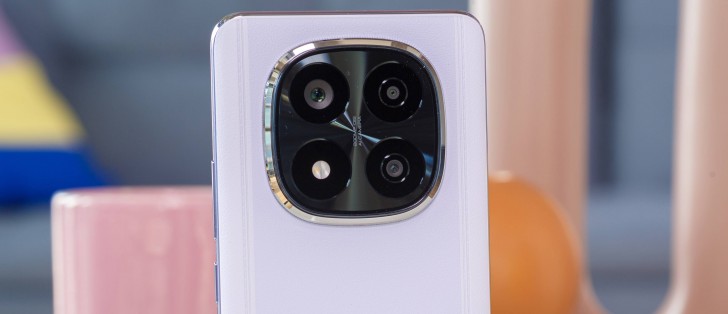
Xiaomi Redmi Note 14 Pro+ 5G
- Extra durable build quality, super nice design, IP68 rating
- Nice display with HDR10+ and Dolby Vision support
- High-density battery with improved performance at sub-zero temps and -20C charging
- Blazing-fast charging
- Solid video recording and excellent low-light photos from the main camera
- Performance is not competitive in the segment, UFS 2.2 storage either
- Battery life is underwhelming
- Daylight photo quality is largely unimpressive
- Doesn't come with the latest Android 15/HyperOS 2 out of the box
The price of the Redmi Note 14 Pro+ has quickly dropped down since its premiere and we cannot but recommend it. There are quite a few things to like in the Redmi Note 14 Pro+, like the extra durable build and smooth design, the very nice screen, the new battery chemistry, the solid performance with awesome thermal stability, the great video recording and the very fast charging. Convinced, yet?
We hoped for better battery life, better photo quality and a bigger performance bump but these things have not changed in the new model a full year later. And there are phones in this price range that can offer you an even better chipset and longer battery life.
The Redmi Note 14 Pro+ does not have any glaring issues and at its current price, it is one of the best options in this price segment, if not the best considering its all-round feature set.
Read our hands-on
Motorola Edge 50
- Exceptionally thin and light, great to handle
- Great build with IP68 and military-grade level of resistance to extreme temperatures
- Wireless charging, fast wired charging
- Dependable camera system, great selfies
- Stereo speakers
- Feature-rich UI with desktop-like mode and five OS upgrades
- Dated SoC with unimpressive performance
- Battery life could be better
- No Always On Display support
- Laggy camera app
The Motorola Edge 50 is a capable midranger with its strengths and weaknesses. For starters, it has a beautiful and sturdy design, offers an excellent OLED with a lot of pixels, colors, and 120Hz refresh rate. Its cameras are nicely versatile and the selfies are promising. It also provides fast charging, wireless charging, and loud stereo speakers.
Unfortunately, the drawbacks are hard to overlook - relatively low raw performance for the price and short battery life.
If you like the Edge 50 lightweight yet sturdy design, its versatile camera and clean Android, and you can live with mid-range performance, we think this phone could be a truly good fit.
Read full review
Xiaomi Poco F6
- Excellent OLED display with HDR10+ and Dolby Vision
- The Snapdragon 8s Gen 3 provides superb performance
- Very fast charging
- Very good stereo speaker setup
- Great main camera performance
- Soli retail bundle
- Battery life leaves more to be desired
- The 8MP ultrawide camera could be better
- Virtual proximity sensor instead of hardware
The €300 Poco F6 may not be the real flagship killer you are looking for, but it gets pretty close and tries to specialize in certain aspects. For instance, the handset offers an excellent viewing experience, good speakers, unmatched performance in the segment, reliable, sustained performance and fast charging. In a way, the Poco F6 seems like a solid multimedia/gaming device on the cheap. Despite the omission of a 3.5mm jack, which many will miss. The absence of a proper proximity sensor may also annoy quite a bit of users
However, the mediocre battery life and okay-ish camera quality keep us from giving the device an instant recommendation. But it does deserve to be on your shortlists.
Read our hands-on
Samsung Galaxy A55
- Sturdy build with Gorilla Glass Victus+, aluminum frame, IP67 rating
- Great battery life
- Dependable camera performance, excellent videos
- Good performance for this price range and great thermal behavior
- Stereo speakers with good quality
- One of the few devices with microSD slot in this price range
- Polished One UI 6.1, entitled to at least 4 years of OS upgrades
- No charger in the box and not very fast to charge
- Unreliable fingerprint reader performance
- Thick display bezels
- The virtual proximity sensor for turning off the screen during calls is not as good as a physical one
The Galaxy A55 tries to ride on the success of its predecessors and though it brings modes updates, it is still one incredibly solid offer. We are impressed by the battery life; we liked the new, more premium design; raw performance is good along with sustained performance, and we are generally happy with the camera all-around, including selfies and video recording. Display quality is competitive, although it's not hard to find bright 120Hz OLEDs nowadays.
We are very disappointed by the fingerprint reader; we are not fans of the virtual proximity sensor, and the thick screen bezels are off-putting. While none of these is a real deal-breaker, they should be considered when shopping for a phone.
All in all, the Galaxy A55 is a good phone at a reasonable price and it gets our recommendation.
Read full reviewMost recent updates
February 23, 2025: Added the Redmi Note 14 Pro+ (as new top in the €400 category) and the Motorola Edge 50 Neo. Moved the Motorola Edge 50 Fusion in a lower price category. Removed the Redmi Note 13 Pro+. Added the Poco X7 Pro (as new top in the €300 category), Redmi Note 14 Pro 4G, Redmi Note 14 Pro 5G, Redmi Note 14 5G, Motorola Edge 50 Fusion and Motorola Edge 50 Neo. Removed the Nothing Phone 2a Plus, Motorola Edge 40 Nep, Redmi Note 13 Pro 5G, Poco X6 Pro, Realme 11 Pro, Motorola G54 Power Edition. Added the Poco X7 (as new top in the €200 category), Redmi Note 14 4G, Galaxy A16 5G, Motorola Moto G55. Rremoved the Poco X6, Poco M6 Pro, Galaxy A25, Redmi Note 13 5G, Redmi Note 12S, Galaxy A15 5G, Realme 12+, Moto G84, Infinix Zero 30. Moved the Redmi Note 13 4G to lower category.
August 28, 2024: Added the Motorola Edge 50 Fusion (as new top in the €400 category) and the Poco F6. Removed the Motorola Edge 40 and the Honor 90. Replaced the Nothing Phone (2a) with the Nothing Phone (2a) Plus model (as new top in the €300 category), removed the Honor Magic6 Lite. Added the Redmi Note 12S.
April 14, 2024: Added the Redmi Note 13 Pro+ (as new top in the €400 category), Galaxy A55, Nothing Phone 2a (as new top in €300 category), Galaxy A35, Poco X6 Pro, Honor Magic6 Lite, Motorola Moto G54 Power, Poco X6 (as new top in the €200 category), Poco M6 Pro, Galaxy A25, Redmi Note 13, Redmi Note 13 4G, Galaxy A15 5G, Realme 12+. Removed the Redmi Note 12 Pro+, Poco F5, Sony Xperia 10 V, Nothing Phone 1, Galaxy A54, Oppo Reno10, Xiaomi 12 Lite, Infinix GT 10 Pro, Redmi Note 12 Pro, Galaxy A34, Poco X5 Pro, Motorola G72, Poco X4 GT, Redmi Note 12, Poco M5s, Moto G32, Galaxy A24 4G. Moved the Realme 11 Pro, Moto G84, Infinix Zero 30, into another category,
November 6, 2023: Replaced the Moto G31 with the Moto G32, replaced the Sony Xperia 10 IV with the Xperia 10 V. Moved the Moto G72, the Poco X4 GT, and the Galaxy A54 in different price categories. Replaced the Poco F4 with the Poco F5 as new top in the €400 category. Added the Honor 90, Oppo Reno10, Realme 11 Pro, Motorola Edge 40, Motorola Edge 40 Neo, Moto G72, Infinix GT 10 Pro. Removed the Realme GT Neo 3T, iQOO Neo 6, Realme GT Neo2, Realme 9 Pro+, OnePlus Nord CE 2 5G, Galaxy A33 5G, Realme 9 Pro, Realme 10 Pro+, OnePlus Nord 2T, Poco X4 Pro 5G, Realme 8, Realme 8i, Realme 9, Moto G62 5G.
October 17, 2023: Added Moto G84 and Infinix Zero 30. Removed moto G82.
June 13, 2023: Replaced the Poco M4 Pro 5G with the Redmi Note 12. Removed the Redmi Note 11, Redmi Note 11 Pro+ 5G, 11 Pro 5G, and 11 Pro, Galaxy M52, Redmi Note 11S, Galaxy A53. Replaced the Galaxy A23 with the Galaxy A24. Replaced the Galaxy A52s with the Galaxy A54. Added the Redmi Note 12 Pro and Redmi Note 12 Pro+. Removed the Galaxy A33 (replaced with the Galaxy A34).
April 12, 2023: Added the Samsung Galaxy A34 and Galaxy A54.
March 20, 2023: Added the Motorola Moto G72.
March 15, 2023: Added the Realme 10 Pro+ and Poco X5 Pro as India specials.
November 11, 2022: We’ve changed the price brackets – Midragers around €200, Midrangers around €300, and Midrangers around €400. Many flagship-killer phones and premium all-rounders have fallen into these new lists. We will start our new changelog from this date.
Best phones by category
Reader comments
- Anonymous
- 22 Apr 2025
- vGT
I personally tell me Samsung A50 is like a good phone but also the Google pixel is 9 mid range the new one is also like good but not that good and also the Apple 16 e is not so good definitely get more expensive and like the Google pixel
- Anonymous
- 22 Apr 2025
- vGT
I personally think the poco X7 is the good but not so good like has not good stabilization
- Danielss23
- 04 Apr 2025
- p%A
Is it possible to add midrange around 500 Eur?








